What is a macro in Excel? How to create and run a Macro in Excel
Macros are small programs that help you automate repetitive tasks that you use in Excel. Recording macros is recording the steps in VBA code (Visual Basic for Applications). The following article will help you do not need to know the language of VBA programming but still help you create small macros and re-run macros whenever necessary.
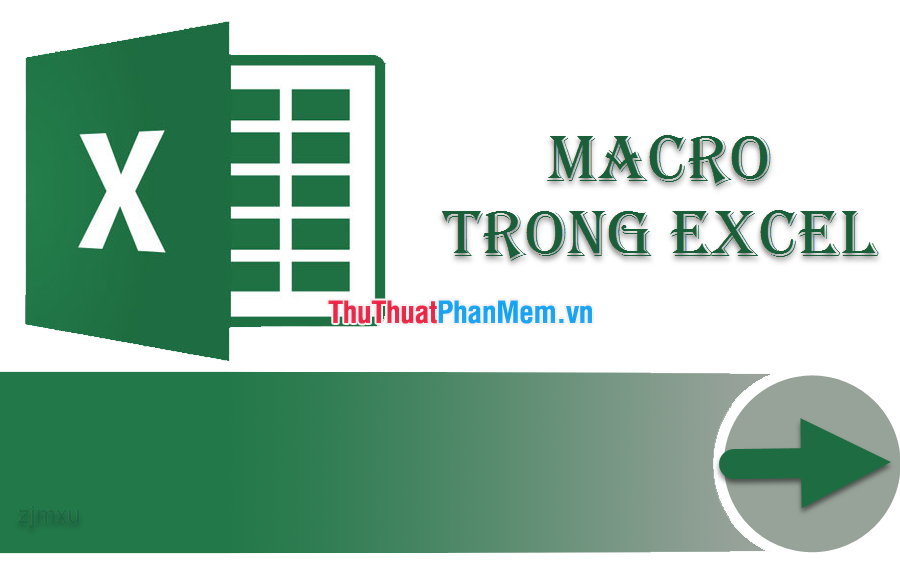
Turn on the Developer tab in Excel
If your Excel software does not have a Developer tab , you can turn it on in the following way. On the File (1) -> choose Options (2) .
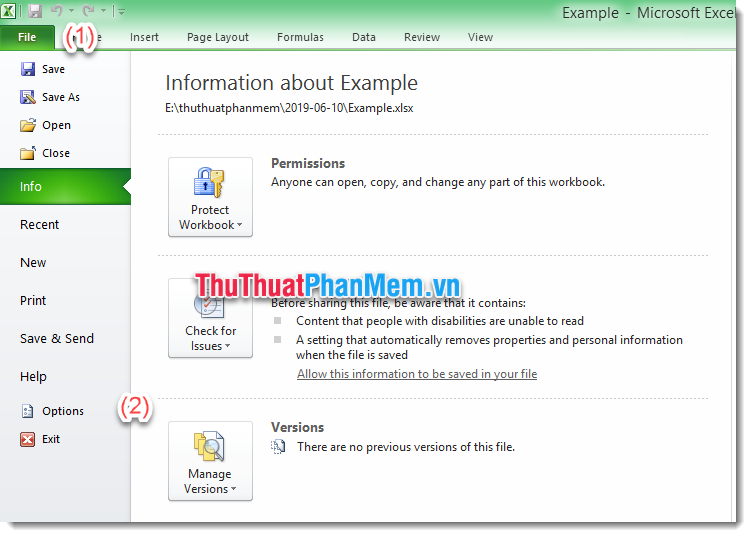
Excel Options window appears, select Customize Ribbon (3) -> Check in Developer (4) => Select OK (5) .
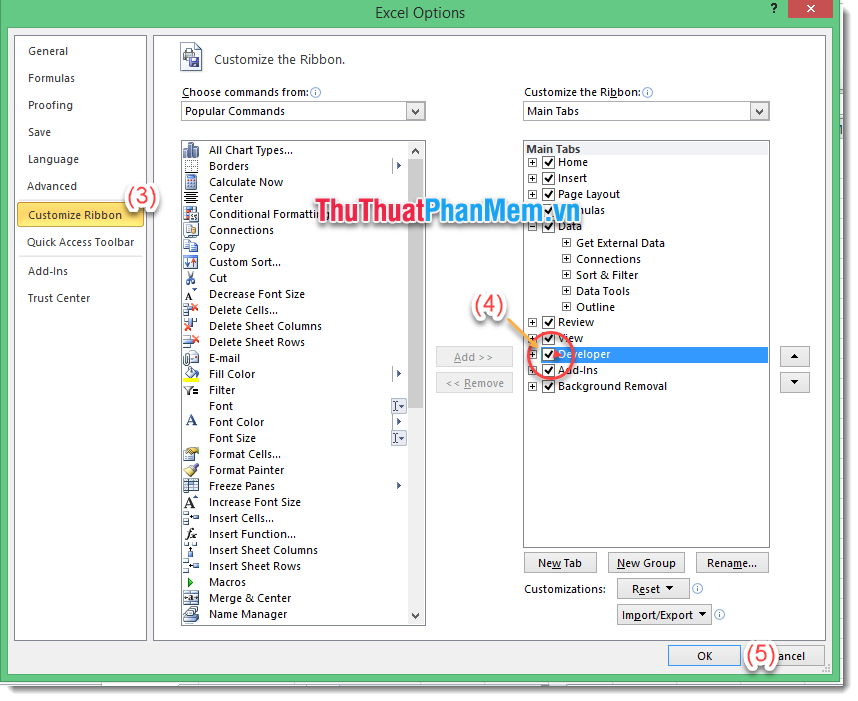
The Developer tab has appeared on the Ribbon. You can now use macros for excel.
How to record a Macro
Recording a Macro is quite simple, but note that the Macro Recorder will record the entire process you perform. If you make a mistake during recording, that action will be logged. So be very careful during Macro recording to avoid losing time recording offline.
The operation to record a Macro is as follows:
(1) On the Developer tab, select Record Macro . The Record Macro windowappears.
(2) You correct the Macro name to make it easier to remember. Click OK.
And start performing the operations on Excel that you want to record.
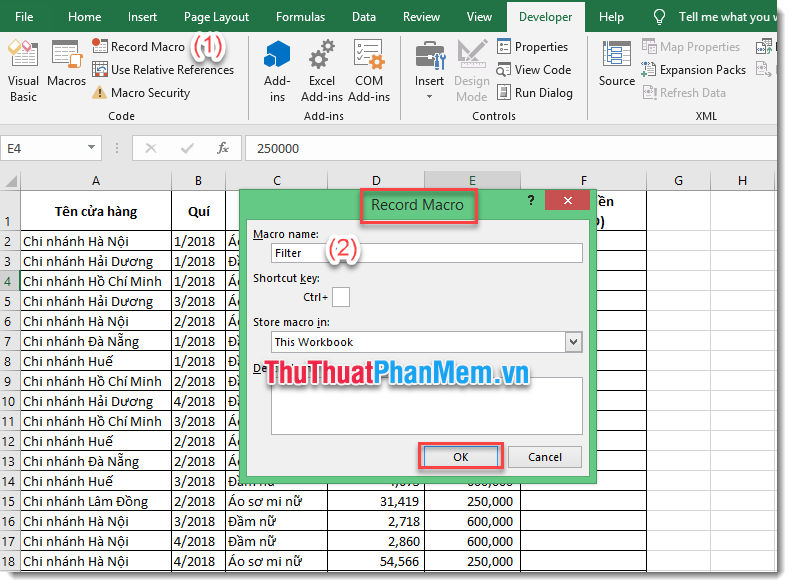
(3) When you want to stop recording Macro, on the Developer tab, click Stop Recording.
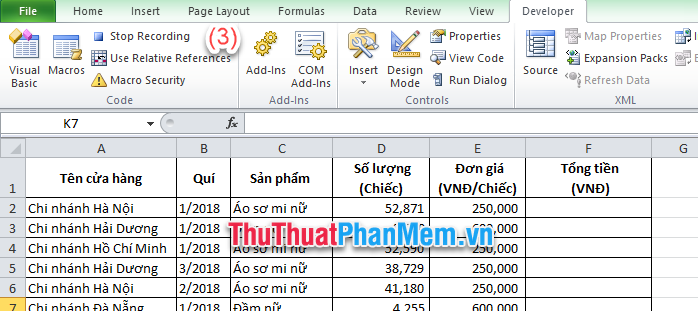
Run the recorded Macro in Excel
Open the Macro dialog box by clicking the key combination Alt + F8 or in the Developer tab select Macro. Macro window appears.
(1) Select the Macro command youwant to apply.
(2) Select the area where you want to apply the Macro command.
- All Open Workbooks: applies to all open windows.
- This Workbooks: applies to the window you are selecting.
(3) Select Run to run the Macro.

The macro will be run and the calculations will be performed in turn as you have noted earlier.
Save the Macro file
Please note, Macro File cannot be saved as a normal Excel file format (.xlsx).
If you want to save all Excel and Macro files, select File -> Save as -> Save as type : Choose Excel Macro-Enable Workbook . The saved file will be saved as a .xlsm file.
If you only want to save the VBA code of the Macro, You press Alt + F11 . The Microsoft Visual Basic for Applications window appears. Right-click on the Module containing the VBA code of the Macro to save. Select Export file and save Macro as .bas file.
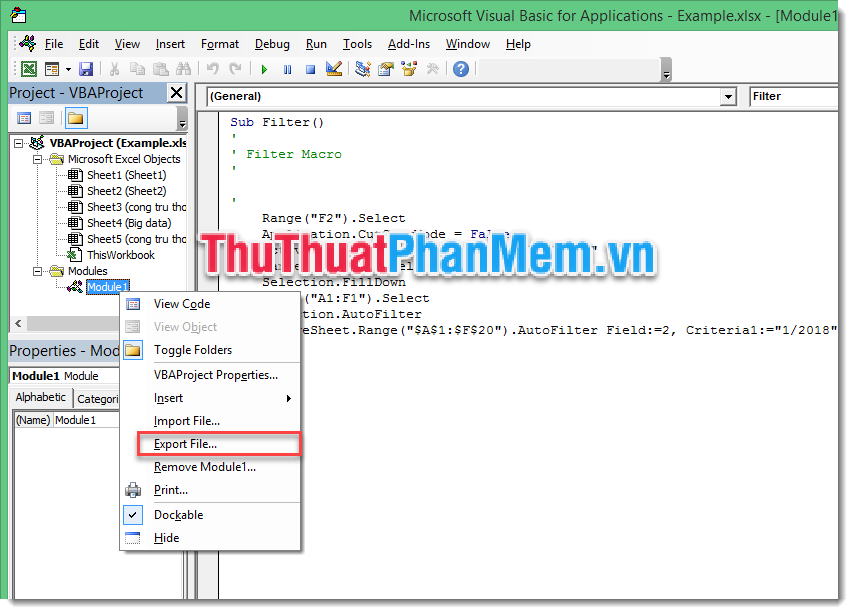
Above Software Tips guide you the easiest steps to record macros and run macros in Excel. Good luck!
You should read it
- How to Remove a Macro in Excel
- The easiest way to Use Macros in Excel
- How to separate sheets into separate Excel files
- 5 source to get macro to automate Excel spreadsheets
- How to Write a Simple Macro in Microsoft Excel
- Attack analysis uses Excel 4.0 macros to disguise
- How to turn on, turn off, delete Macro in Excel
- How to Create a Custom Macro Button in Excel
May be interested
- Fix macro have been disabled error in Excel super fast
 are you looking for a way to fix the macro have been disabled error in excel? stop here for a moment and tipsmake will answer in detail.
are you looking for a way to fix the macro have been disabled error in excel? stop here for a moment and tipsmake will answer in detail. - How to Automatically Report on Excel
 today's tipsmake will guide you how to automatically report data on microsoft excel. this article also talks about how to query and create reports from external sources (mysql, postgres, oracle, etc.) right on your spreadsheet using the excel plug-in to link your spreadsheet to the source. that data. as for data stored on excel spreadsheets, we will use macro commands to create and export reports into many different file types with just one keystroke. luckily, excel has this feature built in, so you won't need to create your own algorithm.
today's tipsmake will guide you how to automatically report data on microsoft excel. this article also talks about how to query and create reports from external sources (mysql, postgres, oracle, etc.) right on your spreadsheet using the excel plug-in to link your spreadsheet to the source. that data. as for data stored on excel spreadsheets, we will use macro commands to create and export reports into many different file types with just one keystroke. luckily, excel has this feature built in, so you won't need to create your own algorithm. - How to Add Rows in Excel Using Formulas
 if you're looking for a quick way to add blank rows to an excel spreadsheet, you'll be surprised to learn that there's no excel function or formula that can do this. however, you can write a macro (a command that executes a certain job script) to instantly add a certain number of rows to the specified location. today's tipsmake will show you how to write a simple macro to add new rows to an excel spreadsheet. besides, the article also shows how to add existing formulas to new rows in the spreadsheet.
if you're looking for a quick way to add blank rows to an excel spreadsheet, you'll be surprised to learn that there's no excel function or formula that can do this. however, you can write a macro (a command that executes a certain job script) to instantly add a certain number of rows to the specified location. today's tipsmake will show you how to write a simple macro to add new rows to an excel spreadsheet. besides, the article also shows how to add existing formulas to new rows in the spreadsheet. - How to Use Macros in Excel
 this wikihow teaches you how to enable, create, run, and save macros in microsoft excel. macros are miniature programs which allow you to perform complex tasks, such as calculating formulas or creating charts, within excel. macros can save...
this wikihow teaches you how to enable, create, run, and save macros in microsoft excel. macros are miniature programs which allow you to perform complex tasks, such as calculating formulas or creating charts, within excel. macros can save... - How to turn on / off Macro in Word
 macros in word are a series of actions, commands that automatically perform tasks that users do not need to perform many times.
macros in word are a series of actions, commands that automatically perform tasks that users do not need to perform many times. - How to Create an OpenOffice Macro
 an openoffice macro can be created to combine a series of frequently repeated tasks into a single step. macros can be effective in saving time, increasing efficiency, and improving productivity in situations where there is a significant...
an openoffice macro can be created to combine a series of frequently repeated tasks into a single step. macros can be effective in saving time, increasing efficiency, and improving productivity in situations where there is a significant... - Instructions on how to create and use macros in Excel Create macros, save macros, run macros
 instructions on how to create and use macros in excel create macros, save macros, run macros. creating a simple macro will make it easier for you to understand and from there you will learn more advanced with macros in excel. if you want to know how to create, save and run macros in
instructions on how to create and use macros in excel create macros, save macros, run macros. creating a simple macro will make it easier for you to understand and from there you will learn more advanced with macros in excel. if you want to know how to create, save and run macros in - How the iPhone 16 turns everyday objects into stunning macro art
 you don't need to spend a fortune on an iphone 16 pro or iphone 16 pro max to take macro shots. the iphone 16's standard 12mp ultra-wide lens lets you get close enough to capture great detail.
you don't need to spend a fortune on an iphone 16 pro or iphone 16 pro max to take macro shots. the iphone 16's standard 12mp ultra-wide lens lets you get close enough to capture great detail. - How to disable Macro mode and auto-switch on iPhone camera
 with the iphone 13 product line, apple has brought macro photography mode to its mobile devices for the first time.
with the iphone 13 product line, apple has brought macro photography mode to its mobile devices for the first time. - How to Add a Button to a Macro
 a prerecorded macro, saved to the macros library, can be assigned to a button in the microsoft office quick access toolbar. when a macro has been assigned to a button in the quick access toolbar, you can 'run' or execute the macro by...
a prerecorded macro, saved to the macros library, can be assigned to a button in the microsoft office quick access toolbar. when a macro has been assigned to a button in the quick access toolbar, you can 'run' or execute the macro by...










 How to fix formulas in Excel, fix data ranges in Excel
How to fix formulas in Excel, fix data ranges in Excel How to use conditional statistical functions in Excel
How to use conditional statistical functions in Excel Wings calculates the number of days, the difference between two dates in Excel
Wings calculates the number of days, the difference between two dates in Excel How to use Group to hide, show rows and columns in Excel 2007, 2010, 2013, 2016, 2019
How to use Group to hide, show rows and columns in Excel 2007, 2010, 2013, 2016, 2019 Cell counting function with data in Excel - Enclose example
Cell counting function with data in Excel - Enclose example How to create Header and Footer borders in Word 2019, 2016, 2013, 2010 and 2007
How to create Header and Footer borders in Word 2019, 2016, 2013, 2010 and 2007